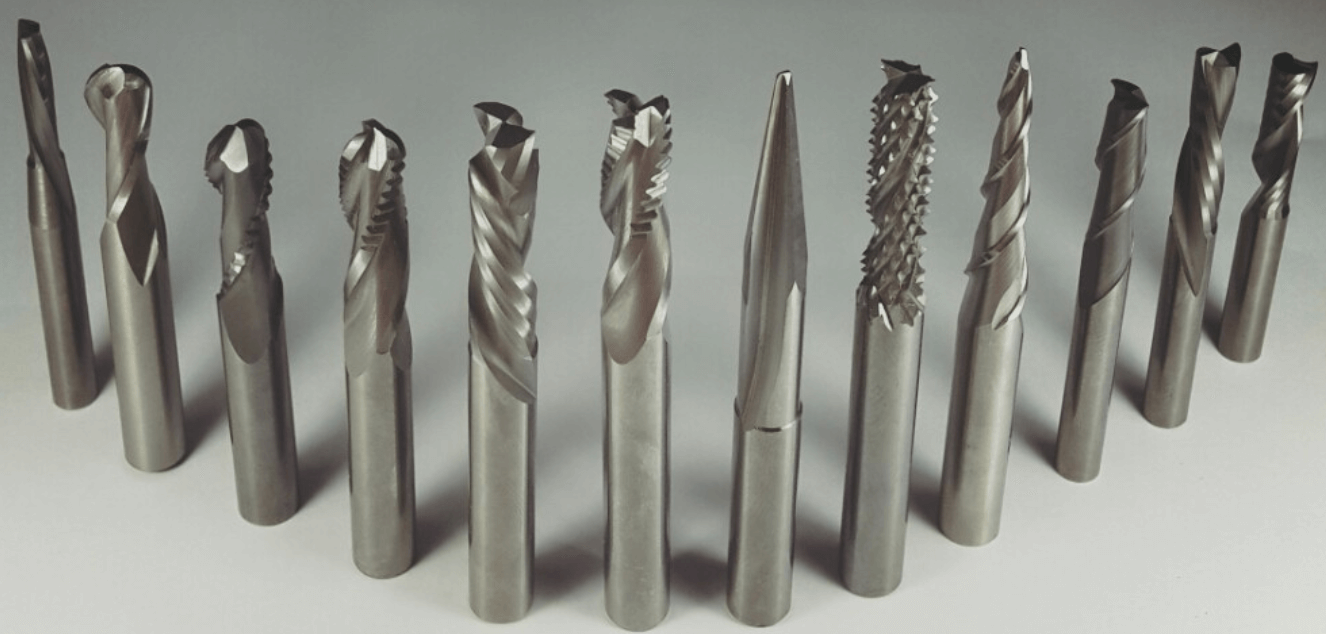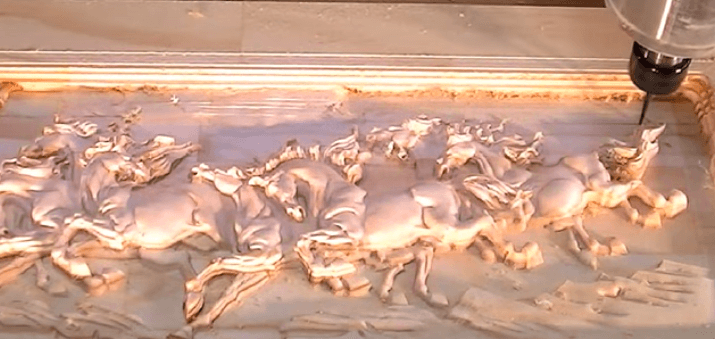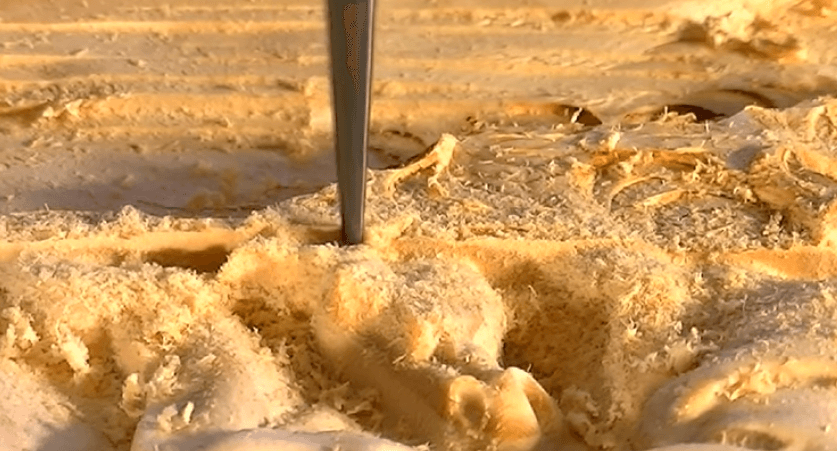Wood CNC Machine VS CO2 Laser Cutter
At first, I thought they were the same machine, but then I realised that Wood CNC Machines and CO2 laser cutters are very different. They differ significantly in many ways regarding how they work, how they operate, and what they can do.
This article looks at the differences between the CO2 laser cutter and the CNC wood cutting machine by comparing them in various aspects.
Difference between wood CNC machine and CO2 laser cutter
| Feature | Wood CNC Machine | CO2 laser cutter |
|---|---|---|
| Price | $1,000-$20,000 | $300-$15,000 |
| Working method | Drill contact engraving | Laser cutting |
| Size | Nearly | Nearly |
| Tools | End Mills | Laser |
| Scope | Engraving | Cut and engraving |
| Cutting depth | Deep | Shallow |
| Speed | Slow | Quick |
| Precision | Low | High |
| Noise | Low | High |
| Post maintenance | Easy | Difficult |
This is a brief comparison of the two, but we will go into more detail about the differences.
Price
Price is the most obvious difference between the two machines. In addition to the purchase cost of a machine, we also need to add the cost of post-use. Like when you buy a car, you need an upfront estimate of the maintenance, fuel, car wash, and car parking costs.
No doubt, comparing the price of a wood CNC machine and a co2 laser cutter also considers the cost of purchase and operation. Of course, if you want to talk about shipping, taxes, customs, etc., this isn't easy to quantify, so that we will ignore these costs for now.
| Parameter | CNC wood machine | co2 laser cutter |
|---|---|---|
| Mini | $100-2000 | $200-1000 |
| Desktop | $2000-6000 | $1000-4000 |
| Industrial | $6000-20000 | $4000-15000 |
At the end of this article, you will find a selection of cnc wood cutting machines and CO2 laser cutters for small businesses and industrial production.
They are available from different brands and at different prices so you can choose according to your budget and needs.
The next part of the article is the maintenance cost for both machines.
Maintenance
Both machines require regular lubrication.
The wood cutting CNC machine can trap debris in the drive system or other components during operation, which can cause serious wear and tear on the machine if not cleaned in time. The machine's drill and spindle will also wear out, costing you money to replace them later.
The main wear and tear on a CO2 laser cutting machine is the laser tube, which lasts 1-3 years, so you must replace it regularly. This means you need to replace the laser tube regularly and clean the optics regularly to ensure the laser head is functioning properly.
Working method
The difference in how the machines work/the principle is the biggest difference between the two.
The CNC wood cutting machine is like a machine knife that replaces our manual carving. It mainly works by direct contact between the drill bit and the material and completes the 3D engraving design.
A CO2 laser cutting machine is applied to the material using a laser beam. The laser head is not in direct contact with the material.
Size
The size of a CNC wood carving machine is slightly larger than that of a laser cutting machine. CNC wood engraving machines have more parts, many separate parts, and you will need to make extra space for them. The size of the machine you purchase is the size you need to reserve at the factory.
Tools

The CNC mainly uses end mills for flexible engraving of various materials and different surface types by changing the drill bit to different shapes.
The laser cutting machine mainly uses an electric current to act on the laser tube, and the resulting laser beam is emitted through the laser head. Cutting/engraving is achieved by controlling the intensity of the laser beam.
Scope

The range of materials cut is different between the two. CNC is mainly used for engraving wood and non-ferrous metals and can engrave thicker materials.
CO2 is suitable for all non-metallic engraving/cutting. For example, a 100w CO2 laser cutting machine can cut wood up to 30mm, although the maximum thickness of the material to be engraved varies depending on the material and laser power.
CNC is suitable for wood furniture, models, and other products that require 3D engraving. CO2 laser cutting machines are ideal for ultra-fine patterns. And while CNC is suitable for 3D engraving, CO2 is perfect for flat and precise engraving and cutting.

Speed
When cutting thin materials, laser cutting is much faster than CNC. Laser processing is approximately twice as fast as CNC, although laser processing speed decreases as the thickness increases. When cutting material thicker than 15cm, the two cut at almost the same speed.
And as the thickness increases again, the CNC cuts faster than the laser.
Thickness
The CNC is generally suitable for 3D engraving of thicker materials and can achieve cutting power by changing the size of the drill bit. The CO2 laser cutter is suitable for precise engraving/cutting of thin materials, mainly by adjusting the cutting power and speed to achieve material cutting.
Clamp
The CNC wood cutting machine requires a clamp to hold the engraving material. Secure the material before engraving, and do not move the material during engraving. Moving the material can cause misalignment of the engraving. It is also essential that the clamps are not positioned to collide with the drill bit, and if they overlap with the path of the drill bit during the engraving process, you will need to readjust the clamps.
The laser cutter works mainly with the laser on the material and does not come into direct contact, so no clamp is required to hold it in place.
Note: When using the CO2 laser cutter to cut very light materials such as paper and fabric, fixing it to the honeycomb plate with adhesive tape is necessary. This prevents it from being sucked up by the fan or blown up by the air assist after the cut.
Movement
Ball screw drives or spindles mainly drive wood CNC machines to operate properly and require a strong force to control the drill head.
Laser cutting machines usually only require a belt drive to control the laser head and do not need to generate a strong force to control it. You can quickly pivot the laser head by hand when the machine is stopped.
Design software
The leading processing software for wood CNC machines is CAD. You need to have a basic knowledge of CAD and a good understanding of design parameters, feed rates, spindle speeds, etc.
Design and operation are more convenient. The CO2 laser cutter is available in AutoCAD, Solidworks, Inkscape, CorelDRAW, PowerPoint, Illustrator, Photoshop, Google AutoDraw, etc. Some machines now also support automatic pattern recognition and intelligent generation, making the process easier.
Accuracy
The accuracy of CO2 engraving is much greater than that of CNC. Usually, the engraving accuracy of a cutting machine is around ±0.01mm. Even some higher-end machines can engrave to ±0.001mm. The engraving accuracy of a CNC machine is around 1cm, so it is not recommended that you use a CNC machine to engrave small-size materials.
Noise
The noise level of a CNC wood machine is much higher than that of a CO2 laser cutting machine. CNC machines are generally open-ended, and the drill bit has to come into contact with the material when the machine is working, so the noise level is higher.
Chip

CNC wood machines are mainly used for physical cutting, producing many chips during the process. You will need a hoover to remove the chips from the material in time to prevent them from accumulating and affecting the engraving results.
CO2 laser cutting machines do not produce a lot of chips during the cutting/engraving process, but they do produce smoke. Usually, the machine is equipped with a fan to remove fumes in time for cutting. Some people even pay extra for an air filter cabinet to absorb and filter the fumes.
Post-processing
After the CNC wood machine has finished, the surface of the material or the seam will have burrs on it, so the surface will need to be polished manually.
After laser cutting/engraving, the product's surface is very smooth, even more so than after manual engraving. We do not need to polish the surface of the finished material again. However, burn marks or scorch marks can be produced on the cut edges or surfaces of the material, which will need to be removed or covered up using many measures.
Final thoughts
The CNC wood machine is the best choice for cutting and engraving thick materials, and the CO2 laser cutter is the best for engraving and cutting non-metallic materials.
Both machines differ considerably in how they work and what you should use them, so the choice is relatively easy when you have a clear idea of what you want.

